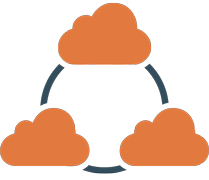How to Modify the JSON Data Schema, MQTT Topic or Data Frequency
With the latest release of CloudRail (Version 1.6) we introduced several little features and improvements to CloudRail. Since the release also included some major new things like Edge Computing, AWS Greengrass, Microsoft Azure IoT Central, OPC-UA or Aveva Insight, the small things often get lost in the excitement about the new release. This, of course, doesn’t mean that they are less important, especially because they often address great feedback which we’ve heard from our customers. A separate blog post for each one would be too much, so Mujtaba, a Senior Software Engineer here at CloudRail, decided to make a quick video about some of the smaller new things.
Key Learnings in this Video
In this video you will learn the following things:
- Modify the JSON Data Schema / Data Model of any connected sensor: Usually CloudRail automatically generates a data model for each sensor that covers all necessary data. In some cases, you might want to change that, for example, to save data on a cellular connection or meet with the requirements of your cloud solution. That’s now possible with CloudRail.
- Modify the Frequency / Data Interval: During the setup process, you usually set a specific interval of how often data is being sent from the sensor to the cloud (e.g. every 500ms). If you wanted to change that later, for example, because you need higher accuracy, it had required a completely new setup for the sensor. With the latest release, you are now able to change the frequency any time and even allows you to switch from “interval” to “on change” or vise versa.
- Modify the MQTT Topic: CloudRail automatically generates an MQTT topic for each new sensor that you connect to the cloud. This topic usually somehow uses the MAC address of the connected IO-Link master as a unique identifier. For most use cases this works well, but, especially some existing applications in the cloud, require a previously defined MQTT topic. You can now change the MQTT topic anytime to whatever you want.
- Connect one sensor to multiple clouds: This actually worked in older versions already, but it’s good to highlight it again. In the video, a sensor is connected to AWS and Aveva Insight in parallel, which is a great example of having OT and IT systems combined using just one Edge Gateway.
- Create Custom Meta Data for Aveva Insight: This is quite similar to modifying the Data Model at other cloud services, but in this case, it has direct impacts on the application itself (Aveva Insight).
How do you get all the new features?
Just hit the “Update Now” button in your CloudRail Device Management Cloud.




